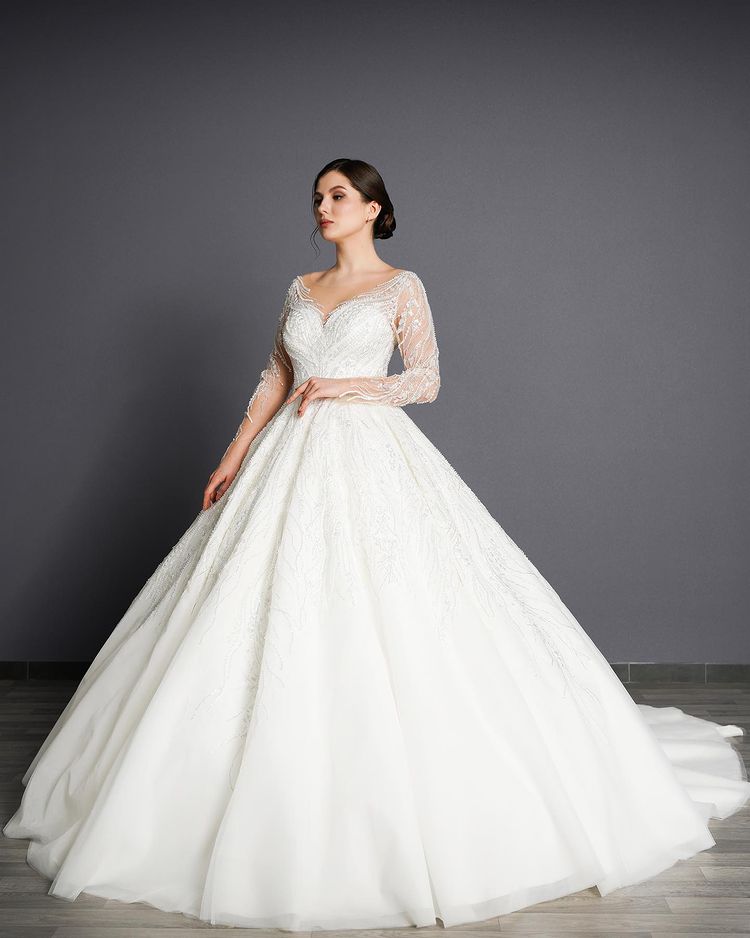I. Introduction
A. The significance of wedding dresses in islamic wedding dresses
Wedding dresses hold a special significance in Islamic weddings, symbolizing the union of two individuals and the celebration of love and commitment in the Islamic faith. They are an integral part of the wedding ceremony and serve as a reflection of cultural traditions and personal style.
B. Balancing tradition and personal style in Islamic wedding attire
Islamic wedding attire beautifully blends tradition and personal style. While preserving the modesty and religious values of the Islamic culture, brides have the opportunity to express their individuality and showcase their unique fashion choices on their special day.
II. Traditional Styles of Islamic Wedding Dresses
A. Classic Silhouettes and Design Elements
Islamic wedding dresses often feature classic silhouettes and design elements that emphasize modesty while exuding elegance and grace. These include:
- Modest necklines and long sleeves
Islamic wedding dresses typically feature high necklines and long sleeves to adhere to the principles of modesty. Different styles of necklines and sleeves can be incorporated to create variations within this traditional framework.
- Flowing fabrics and delicate embellishments
Flowing fabrics, such as chiffon or silk, are commonly used to create ethereal and elegant silhouettes. Delicate embellishments like lace, embroidery, or beading add intricate details and elevate the overall design.
- Traditional embroidery and beadwork
Islamic wedding dresses often showcase traditional embroidery and beadwork, reflecting the cultural heritage of the bride. These intricate details can be inspired by specific regions’ traditional patterns and motifs, adding a touch of richness and cultural significance to the dress.
B. Cultural Influences on Islamic Wedding Dresses
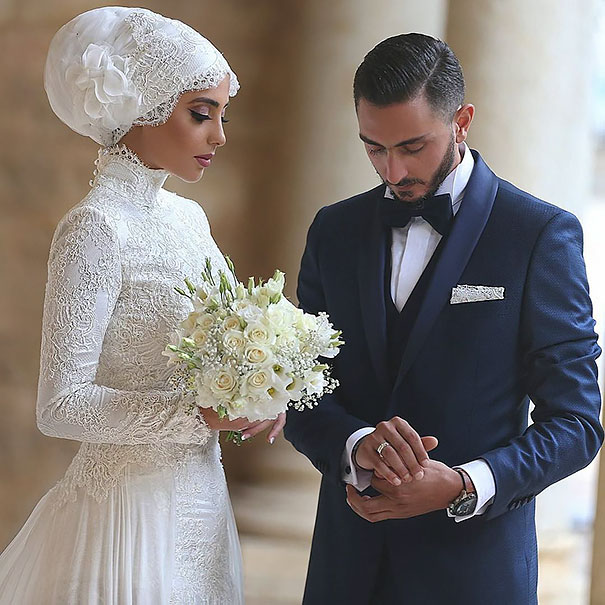
Islamic wedding dresses are influenced by various Muslim cultures, each incorporating regional styles and preferences. These cultural influences include:
- Different styles and influences across various Muslim cultures
Muslim wedding dresses can vary greatly depending on the cultural traditions and customs of the region. From the heavily embellished dresses of South Asia to the simplified elegance of Middle Eastern designs, each culture brings its unique flavor to Islamic wedding attire.
- Traditional fabrics and patterns unique to specific regions
Specific regions have traditional fabrics and patterns that are intricately woven into their wedding dresses. For example, Pakistani bridal dresses often feature vibrant colors, intricate thread work, and mirror embellishments, while Moroccan wedding dresses may showcase handwoven fabrics and intricate geometric patterns.
- Incorporating cultural heritage in wedding attire designs
Islamic wedding dresses often incorporate cultural heritage by incorporating unique elements such as traditional embroidery techniques, familial symbols, or regional designs. This allows brides to pay homage to their cultural roots and embrace their heritage on their special day.
III. Modern Trends in Islamic Wedding Dresses
A. Contemporary Interpretations of Traditional Styles
Islamic wedding dresses have evolved to incorporate contemporary styles while maintaining the principles of modesty. Some modern trends include:
- Modern cuts and silhouettes while maintaining modesty
Contemporary Islamic wedding dresses may feature innovative cuts and silhouettes that embrace elegance and fashion-forward styles while adhering to modesty guidelines. Designers experiment with various sleeve options, waistlines, and hemlines to create modern yet modest looks.
- Fusion of Western and Islamic influences
Western influences can be seen in the fusion of styles, such as combining traditional Islamic silhouettes with Western-inspired details like illusion necklines or detachable trains. This fusion allows brides to express their individuality while staying true to their faith.
- Experimentation with colors and non-traditional fabrics
While white or ivory remains popular, there is a growing trend of experimenting with different colors and non-traditional fabrics. Brides may opt for pastels, metallic shades, or even bold hues to showcase their personal style.
B. Customization and Personalization of Islamic Wedding Dresses
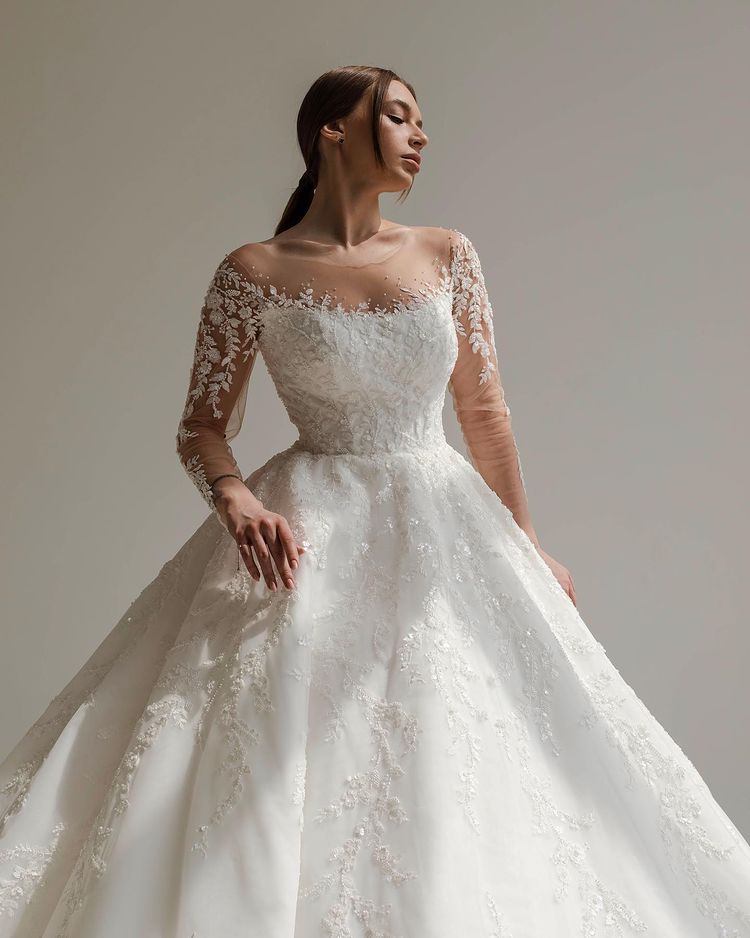
Brides have the option to customize and personalize their Islamic wedding dresses to reflect their preferences and honor their cultural and familial heritage. This includes:
- Tailoring wedding dresses to reflect individual preferences
Brides can work with tailors or designers to modify traditional designs to suit their style. This includes customizing necklines, sleeve lengths, and embellishments to create a dress that is uniquely theirs.
- Incorporating cultural and familial symbols through embroidery or accessories
Embroidery or accessories bearing cultural and familial symbols can be incorporated into the dress, adding an extra layer of meaning and personalization. This could include symbols of prosperity, love, or family traditions that hold significance for the bride and her family.
- Working with designers to create one-of-a-kind pieces
Collaborating with designers allows brides to bring their vision to life and create a truly unique and one-of-a-kind wedding dress. Designers can merge traditional elements with modern sensibilities, resulting in a dress that is both timeless and personalized.
IV. Bridal Accessories and Styling with Islamic Wedding Dresses
A. Hijabs and Veils
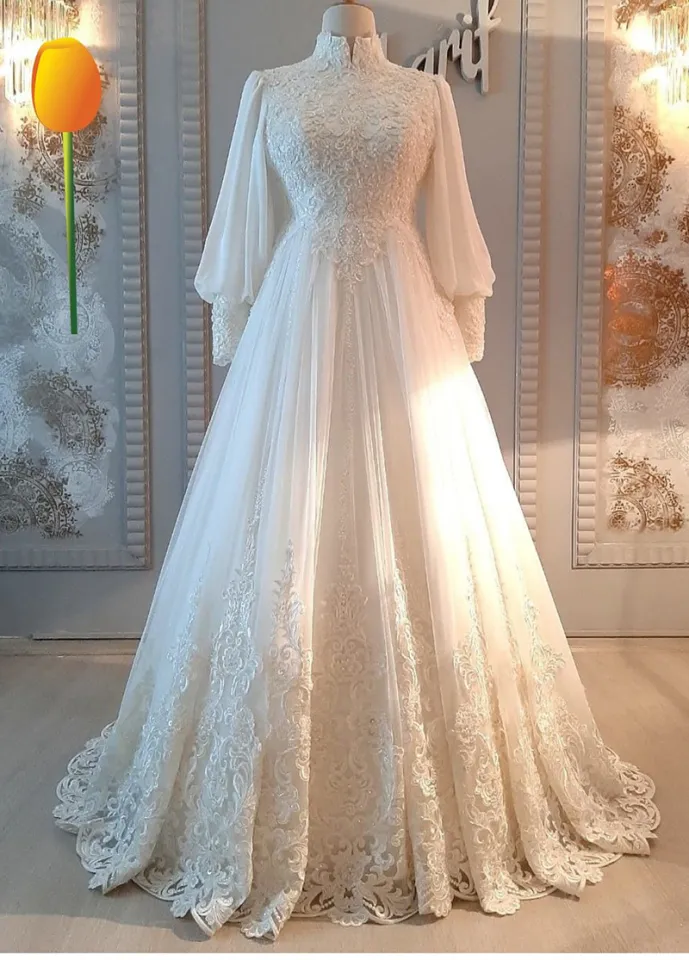
The hijab holds great cultural and religious significance for Muslim women, and it is an essential accessory for many brides on their wedding day. When styling the hijab with an Islamic wedding dress, there are various considerations to keep in mind. Here are some key elements to explore:
- Different styles and ways to wear hijabs
There are countless styles and techniques to wear the hijab, and each bride can choose one that reflects her personal preference and cultural traditions. Some common styles include the traditional wrap-around style, the turban style, the draped style, or the voluminous style. Each style affects the overall look and can be adapted to suit the dress and desired aesthetic.
- Coordinating hijab styles with dresses
It is important to coordinate the style and color of the hijab with the wedding dress to create a cohesive and elegant look. Consider the neckline, embellishments, and overall design of the dress when selecting the hijab style. For example, if the dress has intricate detailing around the neckline, a simpler hijab style may be more appropriate to avoid distracting from the dress.
- Incorporating veils as an additional layer of elegance
In addition to the hijab, some brides also choose to wear a veil as an additional layer of elegance. Veils can be worn in various styles, such as a traditional face-covering veil or a longer veil cascading from the back of the head. The selection of the veil depends on personal preference and cultural traditions.
B. Jewelry and Other Accessories
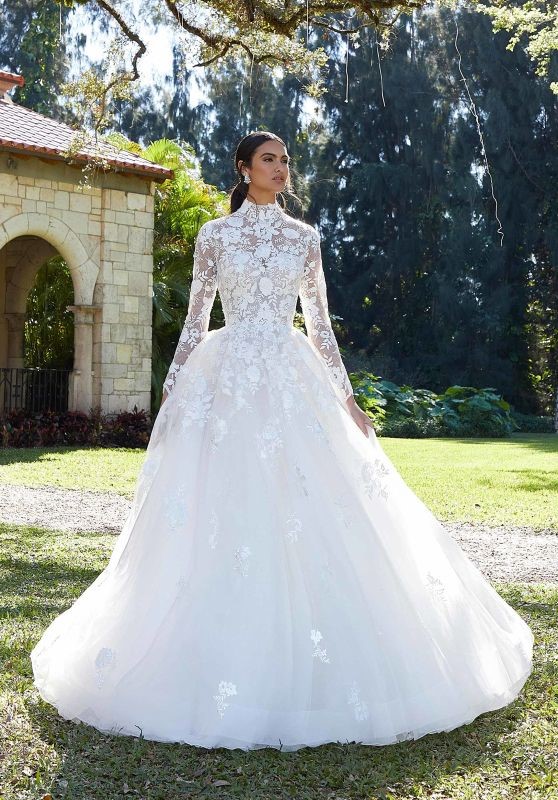
Islamic wedding dresses can be beautifully complemented by carefully chosen jewelry and other accessories. Here are some considerations when selecting accessories:
- The significance of traditional bridal jewelry
Traditional Islamic bridal jewelry holds cultural and sentimental value. Pieces such as the mang tikka (headpiece), jhumkas (dangling earrings), and bangles are commonly worn by brides. These pieces often feature intricate designs, gemstones, and precious metals. The selection of jewelry should reflect the bride’s cultural heritage and personal style.
- Choosing accessories that complement the wedding dress
When selecting accessories, it is important to consider the style and design of the wedding dress. The jewelry should harmonize with the dress, enhancing its beauty without overpowering it. For example, if the dress has intricate embroidery or beadwork, simpler and more understated jewelry may be preferable. Conversely, if the dress is more minimalistic, bolder and more ornate jewelry can add a touch of glamour.
- Balancing opulence and simplicity in accessory choices
Striking the right balance between opulence and simplicity is crucial when choosing accessories. It is important to not overwhelm the overall look but rather enhance it. For example, if the dress is heavily embellished with intricate embroidery or beadwork, opting for simpler jewelry pieces can ensure a harmonious and elegant look. On the other hand, if the dress is relatively simple, more elaborate and eye-catching accessories can be chosen to create a focal point.
V. Conclusion
Bridal accessories play a significant role in completing the look of an Islamic wedding dress. The hijab and veil are important elements that reflect religious and cultural traditions, and their styling should be carefully coordinated with the dress. The choice of traditional bridal jewelry and other accessories adds an extra layer of elegance and personalization to the overall look. By selecting accessories that complement the dress while maintaining a balance between opulence and simplicity, Muslim brides can create a stunning and culturally significant ensemble on their special day.

